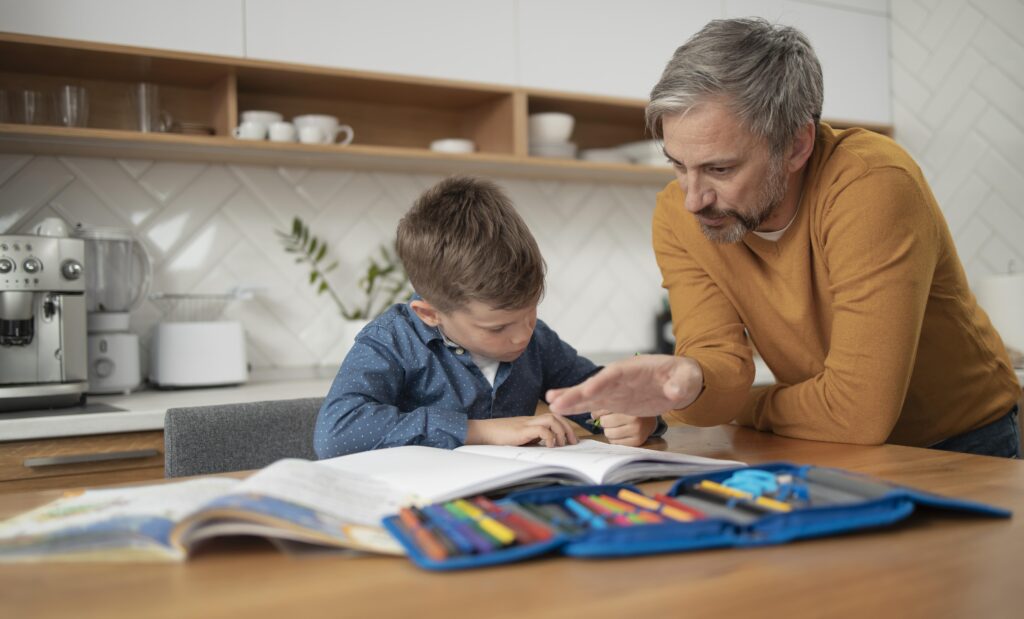In today’s fast-paced world, parents always look for ways to keep their children entertained, engaged, and, most importantly, learning. While tablets, video games, and TV shows can provide temporary distractions, they often fail to offer the kind of hands-on engagement that encourages creativity and developmental growth. Enter the Busy Book—a lifesaver for parents and an enriching, screen-free activity for kids. This all-in-one activity book is designed to captivate children’s attention while fostering essential skills like problem-solving, motor development, and creativity.
In this blog, we’ll explore what makes a busy book so popular, how it benefits children and parents, and why it’s a must-have in every household. We’ll also answer five frequently asked questions about busy books.
What is a Busy Book?

A busy book, also known as a quiet book, is an interactive, often handmade or purchased activity book designed to keep children engaged with tactile and cognitive exercises. These books are filled with pages of activities that are designed to be fun and educational. From puzzles and shape matching to buttoning, zipping, and counting exercises, each page offers something unique that helps children playfully learn new skills.
Busy books come in many forms, from fabric-based books with soft, textured materials to laminated books with erasable markers for drawing. They’re an excellent option for keeping little hands busy during car rides, waiting at restaurants, or quiet time at home.
Why Busy Books Are More Than Just Fun
Busy books are not just toys; they serve as valuable educational tools that promote a wide range of developmental skills in young children. Here’s how:
- Enhancing Fine Motor Skills
Busy books are packed with activities that require the use of small muscles in the hands and fingers. Tasks such as fastening buttons, tracing shapes, and turning pages help improve fine motor skills, which are crucial for writing, drawing, and dressing.
- Boosting Cognitive Development
Each activity in a busy book is designed to encourage problem-solving and critical thinking. Children are challenged to recognize patterns, sort colors and shapes, count objects, and follow sequences. These cognitive exercises help improve memory, attention span, and logical thinking.
- Fostering Independence
One of the best things about a busy book is that children can use it independently. While parents might need to show them how to use certain activities initially, kids quickly learn to engage with the book independently. This encourages self-directed play and gives parents a much-needed break while knowing their children are involved in productive learning.
- Encouraging Creativity
Many busy books feature open-ended activities that spark creativity. Some books include blank pages for drawing, while others have movable parts that allow children to rearrange scenes or create new stories. This freedom to explore helps boost imaginative thinking.
- Portable and Convenient
One of the greatest conveniences of a busy book is its portability. Unlike bulky toys or messy craft projects, a busy book is compact and easy to take anywhere. Whether going on a road trip, visiting relatives, or heading to the doctor’s office, having a busy book on hand ensures that your child remains entertained constructively.
How Busy Books Help Parents
Busy books are beneficial for children and offer a range of advantages for parents. Let’s explore a few:
- Screen-Free Solution: In an age where screens dominate our lives, busy books offer a screen-free alternative for entertainment. This is a healthy way to limit screen time while still keeping your child engaged and entertained.
- Calm and Quiet Time: These books are designed to keep children relaxed and focused, making them perfect for situations where silence or calmness is needed, such as on flights, at appointments, or in restaurants.
- Parent-Child Bonding: Busy books can also be used for parent-child interaction. Parents can guide their children through activities, encourage conversations about their learning, and help them solve problems together.
Choosing the Right Busy Book
When it comes to choosing a busy book, there are several factors to consider:
- Age Appropriateness: Make sure the busy book you choose is appropriate for your child’s age. Younger children may need simple activities like shape sorting, while older kids will benefit from more complex tasks like puzzles and number games.
- Durability: Busy books are handled frequently, so opt for one that is made from high-quality, durable materials. Fabric busy books, for example, are generally sturdy and easy to clean.
- Variety of Activities: An excellent busy book will offer a wide range of activities to keep your child engaged. Look for a mix of hands-on tasks, cognitive challenges, and creative activities.
- Portability: Consider how easily the book can be transported. Choose a lightweight, compact book that is still full of engaging activities.
- Safety: Ensure that the materials used are non-toxic, especially if your child is young and prone to putting objects in their mouth. Always check for any small parts that could be a choking hazard.
FAQs about Busy Books
- What age group are busy books suitable for?
Busy books are generally designed for children aged 1 to 6, though some can be adapted for older children. The activities within the book should match the child’s developmental stage. Simple tasks like shape matching are ideal for toddlers, while preschoolers may enjoy more complex puzzles or math-related activities.
- Can I make a busy book at home?
Many parents make their busy books at home using felt, fabric, and simple craft supplies. Homemade busy books can be personalized with your child’s name or favorite characters and tailored to their interests. Plenty of tutorials and templates are available online to help you get started.
- What skills do busy books develop?
Busy books help develop various skills, including fine motor skills, hand-eye coordination, problem-solving, cognitive abilities, and creativity. They also encourage independent play and can improve concentration and focus.
- Are busy books safe for toddlers?
Busy books are typically designed with safety in mind, but it’s essential to check the specific book you purchase. Ensure that all parts are securely attached and that the book does not include any small, detachable pieces that could pose a choking hazard for toddlers.
- Where can I buy busy books?
Busy books are available at a wide range of online and in-store retailers. You can find them on websites like Amazon, Etsy, and local craft stores. Many businesses specialize in handmade busy books, allowing you to choose a unique, custom option for your child.
Conclusion
A busy book is more than just a fun way to pass the time; it’s an invaluable tool for helping children develop crucial skills while keeping them engaged and entertained. Whether you’re a parent on the go or looking for screen-free activities at home, a busy book is a must-have in your parenting toolkit. With endless learning opportunities, these books offer a perfect blend of fun, education, and creativity, making them an excellent investment in your child’s development.
Grab a busy book today, and watch your child’s imagination and skills flourish!
